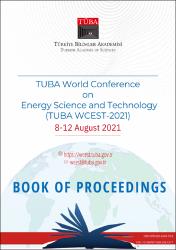| dc.contributor.author | Güler, Merve | |
| dc.contributor.author | UNSAL, DERYA BETUL | |
| dc.date.accessioned | 2022-05-17T10:08:02Z | |
| dc.date.available | 2022-05-17T10:08:02Z | |
| dc.date.issued | 2021 | tr |
| dc.identifier.uri | https://hdl.handle.net/20.500.12418/13164 | |
| dc.description.abstract | Today, increasing energy demand in parallel with the increasing population and developing technology emerges as an important component of energy production planning and smart grids. The load estimation method chosen has a critical importance in energy production so that stability cannot be mentioned in a network structure where the supply-demand balance cannot be achieved, and the network balance can be provided. In this study, different load estimation methods based on machine learning are examined according to their advantages and disadvantages for short-term, long-term and medium-term forecasts. In order for the methods to be superior to each other, the missing points were specified, and when examined from many different points, attention was drawn to the superiority of LSTM's energy production estimation. | tr |
| dc.language.iso | eng | tr |
| dc.publisher | TÜBA | tr |
| dc.rights | info:eu-repo/semantics/openAccess | tr |
| dc.subject | Energy Demand, LSTM, Smart Grid | tr |
| dc.title | INVESTIGATION OF LSTM FOR ENERGY DEMAND RESPONSE APPLICATIONS | tr |
| dc.type | conferenceObject | tr |
| dc.relation.journal | TUBA World Conference on Energy Science and Technology | tr |
| dc.contributor.department | Fen Bilimleri Enstitüsü | tr |
| dc.contributor.authorID | 0000-0002-7657-7581 | tr |
| dc.relation.publicationcategory | Uluslararası Konferans Öğesi | tr |















